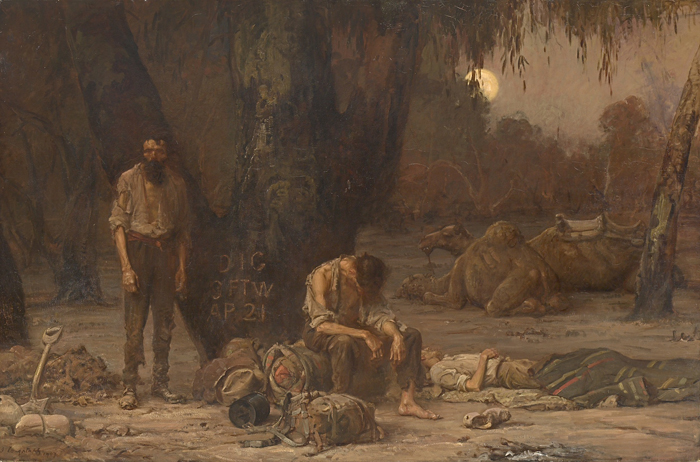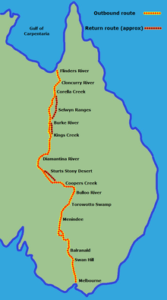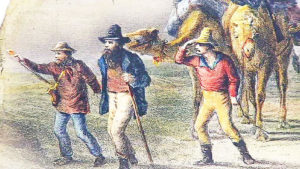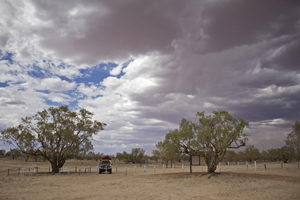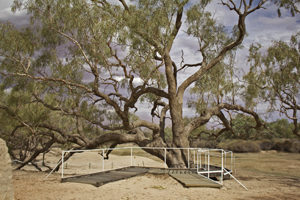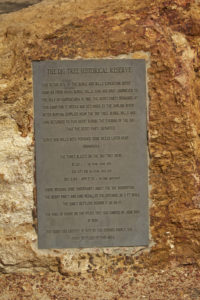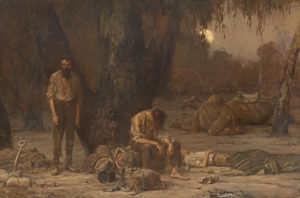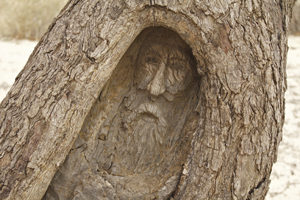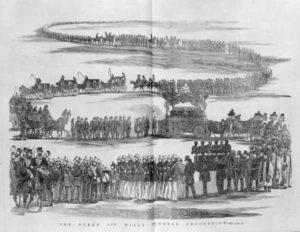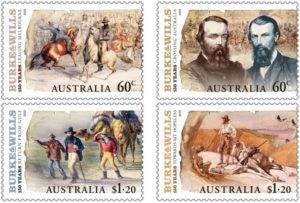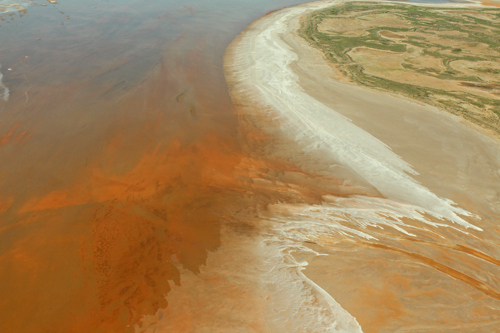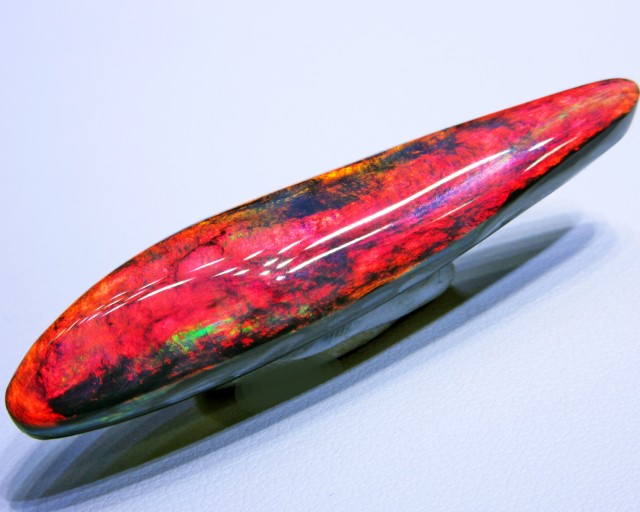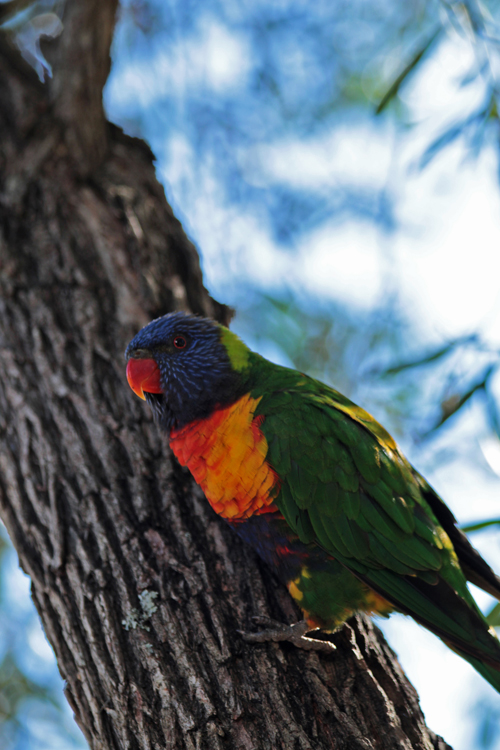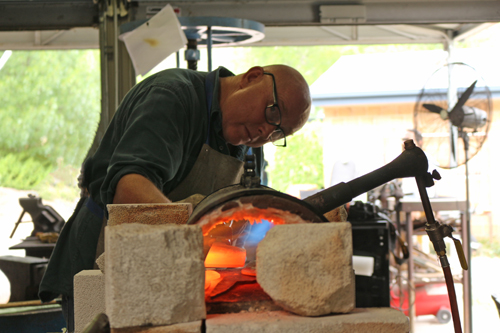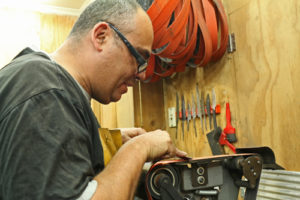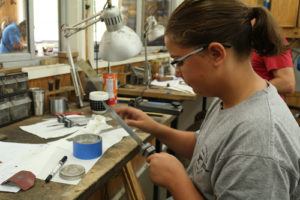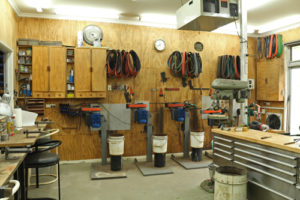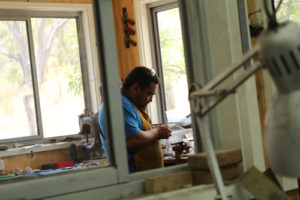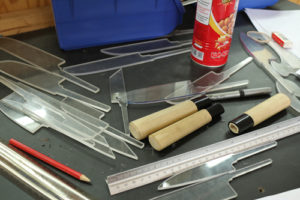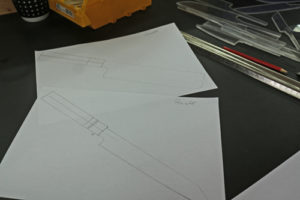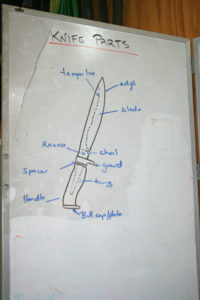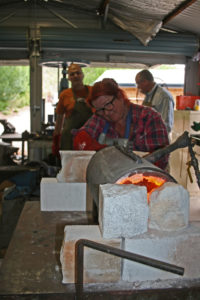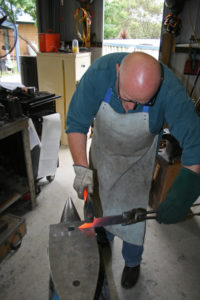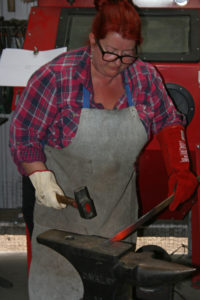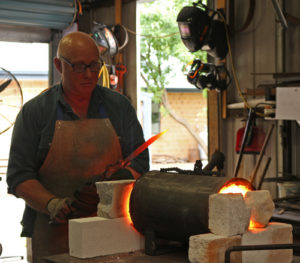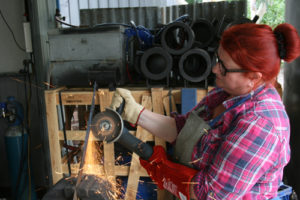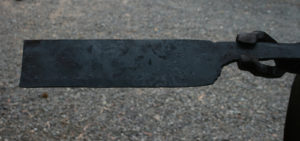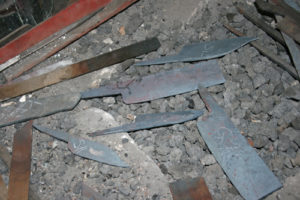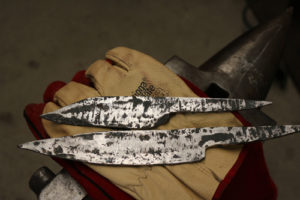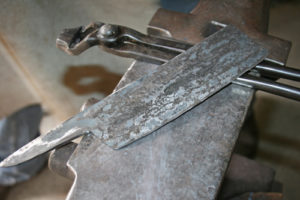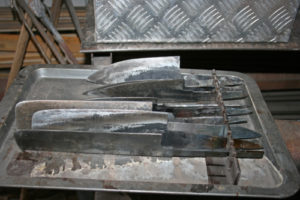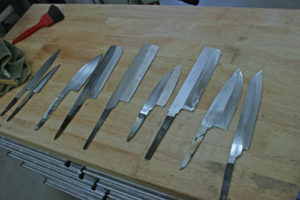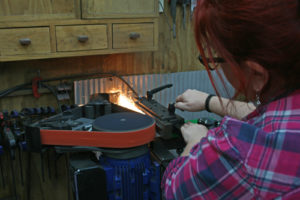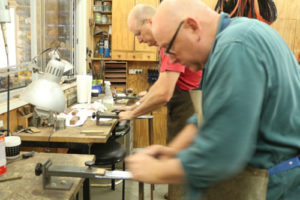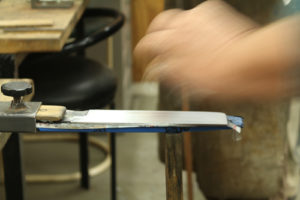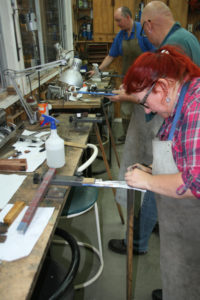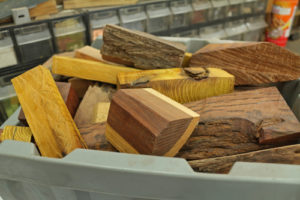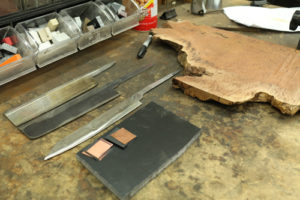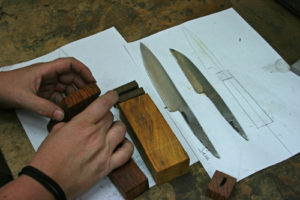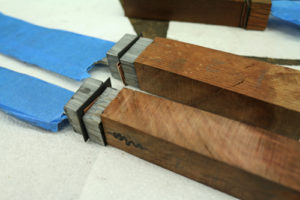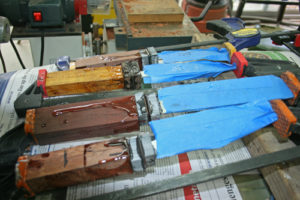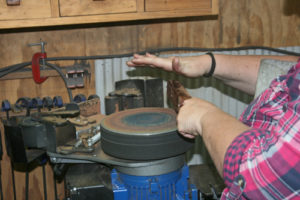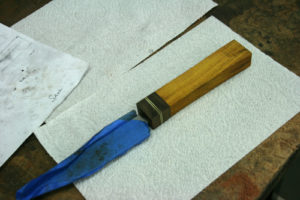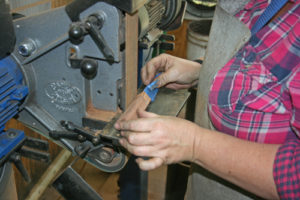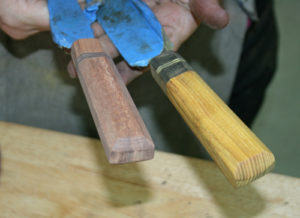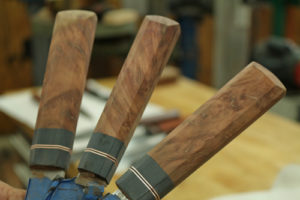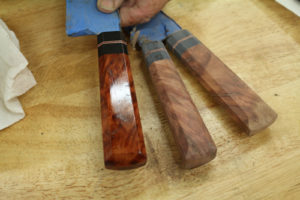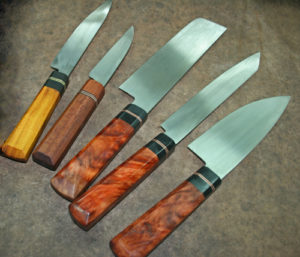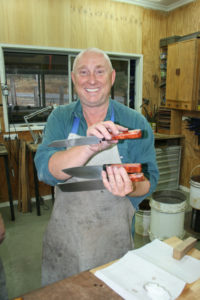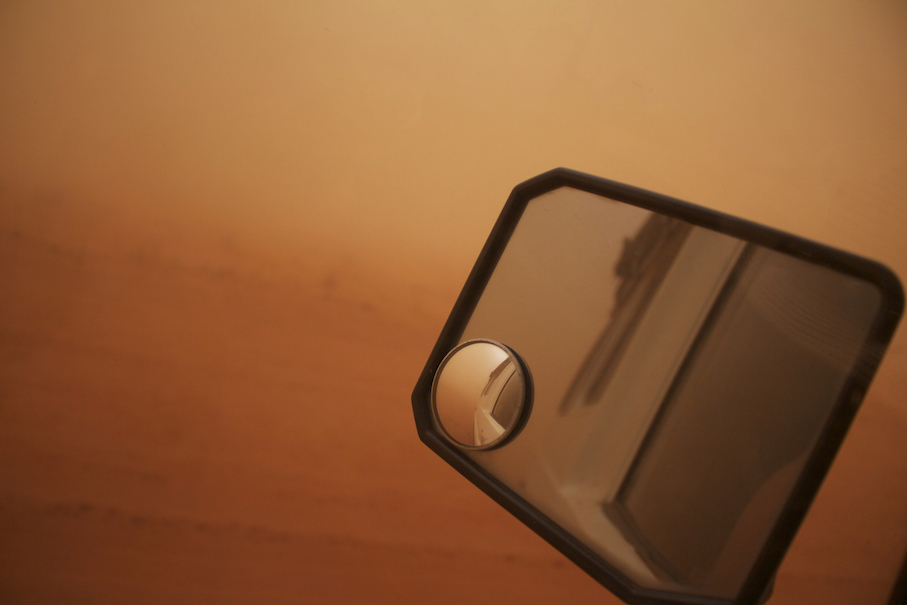They’re called stones fallen from heaven, living fire, an anchor stone of hope. Some swear they made the owner invisible. We just call them opals and their story is magical.
The finest opals come from Australia. It’s not just a boast, it’s also a fact. Not only the finest, but also the most – 95% of all opals are eked out of this great continent.
Black opals – which aren’t really …..
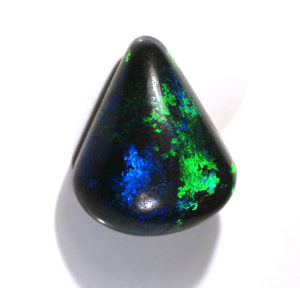
Black opals are never entirely black
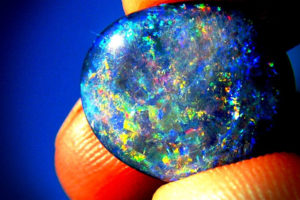
Some black opals even look blue
…..light opals, which are….
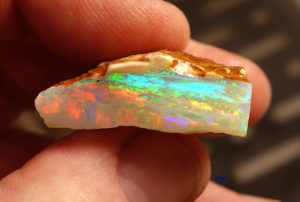
Light opals are most common in Coober Pedy
……. and boulder opals, which are a bit of both
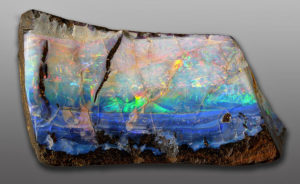
Boulder opals are indeed part boulder and part opal
– come in all shapes and sizes, but most importantly must have the fire that marks the gem.
Even the mining areas sound a little magical – Lightening Ridge, Mintabie, Andamooka, Quilpie and White Cliffs. Perhaps the biggest mining area is at Coober Pedy, in the very heart of the Australian outback.

The Coober Pedy mining truck welcomes you to town
Coober Pedy is like nowhere else – literally an up-side-down world where the living make their homes and work underground and out of sight, while the cemetery is up-top and in the open!
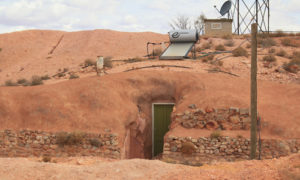
Home, sweet dome. The front door, tucked into the hillside

The house under the hill – one of many
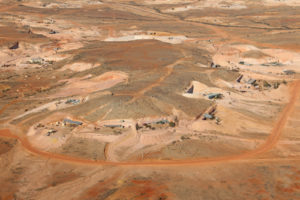
The majority of residents live underground in hillside dugouts

A dugout home
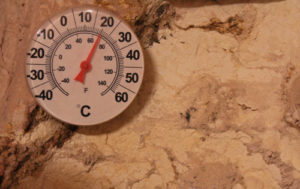
The temperature remains constant below ground
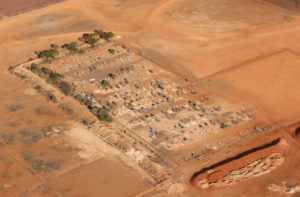
The Coober Pedy cemetery on a ridge above the town
Flying over the town also gives a bird’s-eye view of the strange formations made from individual mine shafts. It’s claimed there are up to four million shafts in and around the town, giving it more of a Martian landscape.
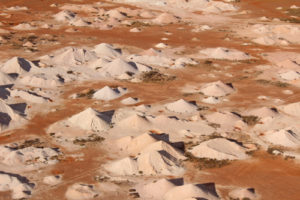
A tiny part of Coober Pedy’s moonscape of mine shafts
A millionaire in Coober Pedy (and they claim there are quite a few) looks the same as every other dust-coated, jeans and plaid-wearing worker; some have struck lucky in just a few feet of fine dirt, others have toiled for decades and never found a chip of colour. They say it is addictive. This miner told us he had already made a million by the turn of the 1980’s. In 2016 he was still down in the dirt.
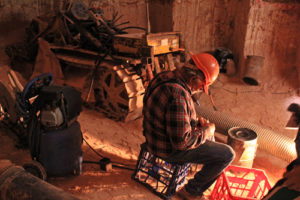
A lifetime underground, hunting for the precious gems

Keen eyes endlessly watch for the glint of a gem
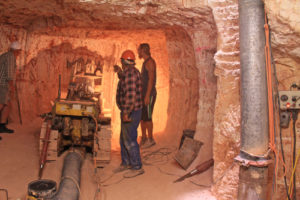
It’s not a hi-tech operation
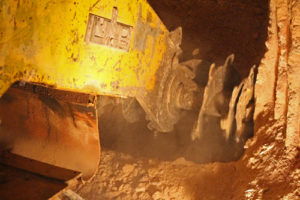
Spinning teeth eat into the mine wall
For all their value, opals started life as nothing more than trickles of silica running through cracks in the earth. Thanks to the inimitable creativity of Mother Earth, what gets chipped out the other side, millennia later is, if you are lucky, a milky stone of fire.
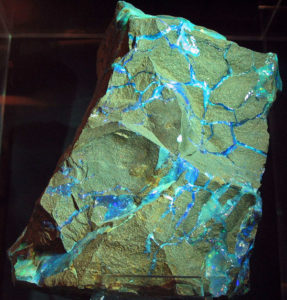
Trickling temptation – this is what the miners yearn for
The stones have been lauded throughout time. Cleopatra was a big fan as were many royals and dignitaries. Roman women prized them above all other stones and the generals often carried opal-tipped staves into battle for luck. The not-so-lucky Marie Antoinette owned one called the Forest Fire. Opals were responsible for founding of London’s famous Hatton Gardens jewellery quarter after Sir Christopher Hatton presented the virgin Queen Elizabeth with a fine set of gems and in return she booted the bishops out of the Palace at Ely and presented Sir Chris with a fine place to live and work. The palace grounds became Hatton Gardens. A much more recent Elizabeth – Taylor – was also an avid collector, as were Andy Warhol and Elvis Presley.
It was originally thought that the gems were only found in the Carpathian Mountains in Europe, in a location so secret that the miners would employ complex subterfuge to remain undiscovered. Opals were also found in Mexico and Peru, feeding the ancient Mayan and Inca desires. Imagine the surprise and delight of opal lovers and miners when the gem they thought only available in a few limited and secret places were found half a planet away in Australia.
Tulle Woolaston is credited as the first large scale trader. It is fitting that Australian opals were first introduced into Europe by Woolaston at Hatton Gardens – the place where is all began centuries earlier.
The opal rush began in earnest in 1889. Originally Coober Pedy the area was known as Umoona by the Aboriginals who lived there. After the mining boom began they renamed it Kupaku Piti, which translates to ‘white man’s hole’.
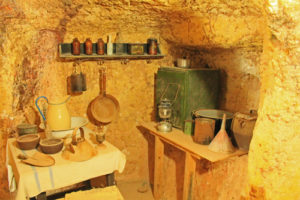
A basic miners dugout
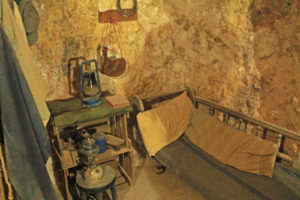
Early miners would often sleep in their claim to stop others from stealing their stones
To look at the mine-fields now you could be forgiven for thinking not much has changed.
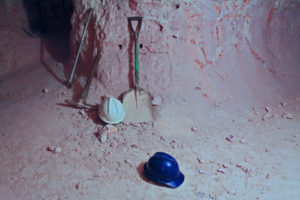
The tools of the trade haven’t changed much
Unlike other mineral extraction, opal mining was and still is mainly a family business. Prospectors peg out a fifty metre square and drop 1.5m exploratory shafts.
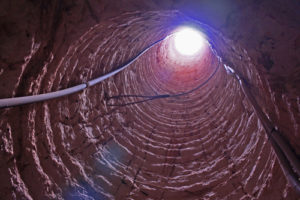
Exploratory shafts are just 1.5metres wide
Then the lateral tunnelling begins.
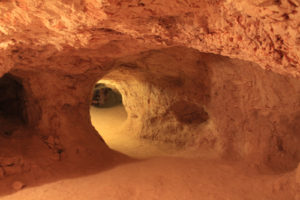
The tunnels goes for miles under the town and surrounding area
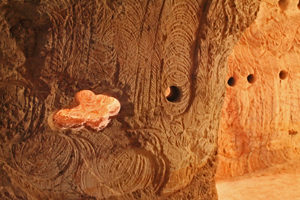
Artistic scars from the mining machines make for great wall art
In 1972 mining was banned underneath the town itself, because of fears that it would simply fall in on itself. There was no detail of who was digging where, and most weren’t just digging, they were dynamiting too. It was the wild west of unregistered and unregulated mining just below the schools, shops and roads and right next to the dug out underground homes. The story is often told of the miner who blew out the lounge room of a neighbour chasing a promising seam. One look from above and the endless miles of mine shafts shows just how real their concerns were.
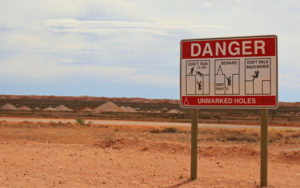
The many dangers of strolling around Coober Pedy

The earth moving from above
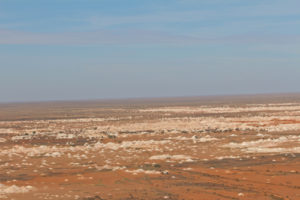
They say there are four million mine shafts around Coober Pedy
Exceptions are made for tunneling to make an underground home. It’s claimed that one Coober Pedy bachelor miner has had to dig out 20 bedrooms under the town, “to accommodate his huge extended family who occasionally visit”
And it seems that all the rules, all the bets and all the courtesy goes straight down the hole if you hit the right seam.
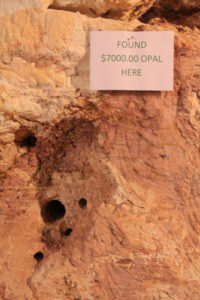
The mines promise much
Coober Pedy is a town of secrets. No one trusts anyone and no one tells anyone anything. Miners are followed through the night to see if they have found a promising dig. Fortunes maybe won or lost, but all go on under the cover of the underground.
The promise of riches and beautiful gems has also brought hopeful families from all over the world. There are around 3,500 people living permanently in Coober Pedy, with 45 different nationalities.
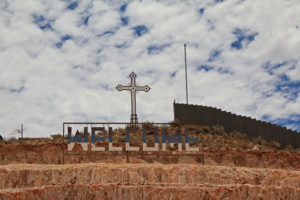
Welcome to the underworld

The underground Serbian Church is one of many different denominations
Some look for divine inspiration, others have divining aspirations, thought it was hard to be convinced that it really worked.
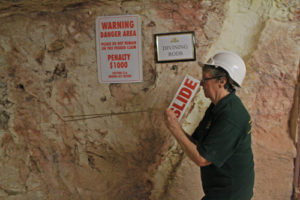
Divining opals – not a very productive process
And if you can’t afford to dig, you can still feed your addiction, with a bit of noodling on the side – the terms of digging through the spoil heaps, or tailings, in search of a missed moment. And yes, there are stories of people finding hugely valuable gems in a pile of dirt, of course there are!

Free noodling
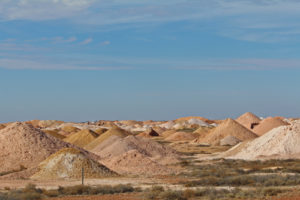
The tailings from countless mine shafts just might hold that lost stone
Coober Pedy is a curious place, full of mystery and intrigue, where the hopes of many nations come together. Beyond its boundaries is the vast outback, and it also has stories of magic and mystery to share.
The Moon Plain has featured in numerous apocalyptic movies, including Mad Max. Named for its endless empty scape, it is also an important place in Aboriginal stories and Dreamtime.
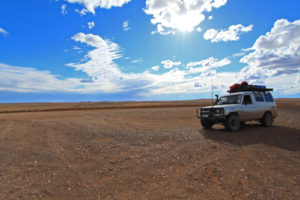
The desolate Moon Plains
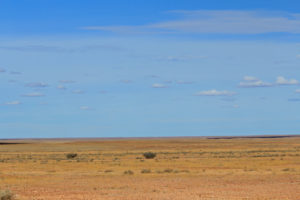
The black shadow of a soft cloud is all that breaks the view
The Breakaways are a series of spectacular rock formations rising out of the Plain in distinct and distinctive colours. This is considered an important place of learning for young Aboriginal men.
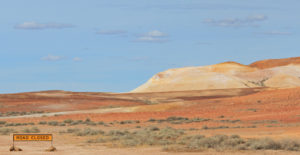
One way only to the Breakaways
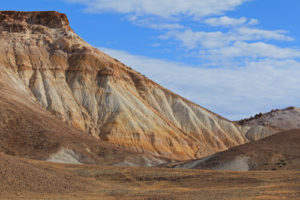
The imposing mounds are considered sacred by the Aborigines
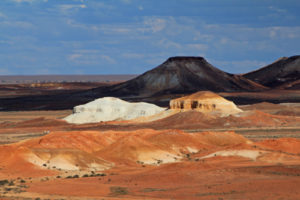
The Breakaways cast in shadow
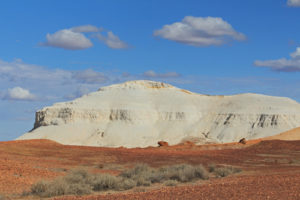
The shapes and colours all tell a story
While the two prominent formations are known as salt and pepper or the castle locally, the Aboriginal story tells of two puppies – one white and one yellow, sitting down near their owner the “man” in the shadow behind them.
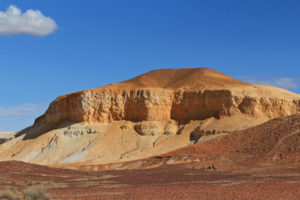
The rich colours of the Breakaways glow in the late afternoon sun
You can clearly see why the Breakaways is also the main source of red ochre (tudu), used in Aboriginal dressing up ceremonies, as well as the source of other ochre colours.
The outback surrounding Coober Pedy holds millennia of history. From ancient stories, to gems as old as the land itself. It also is part of more modern record-breaking history.
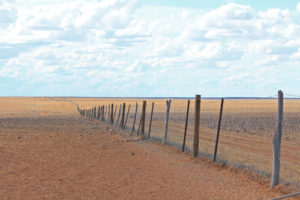
Part of the Dog Fence
“A fence”, we hear you say, “it’s a fence”. It’s not just a fence. The Dog Fence is the longest fence in the world. This humble stretch of wood and wire built in the 1880’s is one of the longest structures in the world. Designed to keep dingoes away from sheep stock, it runs a mind-boggling 5,614km from the east to the south of Australia.

The Dog Fence stretches across the continent
Hundreds of men live along the fence, working in shifts and sleeping in small huts complete with satellite TV and shortwave radios to keep the barrier intact.

You can see the Dog Fence running through the middle of the frame
But if size does matter to you, then Anna Creek is for you. It is the world’s biggest property, spread over six million acres, or 24,000km2. If it were a country it would be 150th on the big list – greater than 89 others.
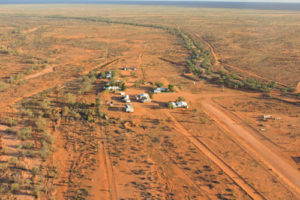
Anna Creek – the largest cattle station in the world, makes the Dog Fence look like a row of toothpicks
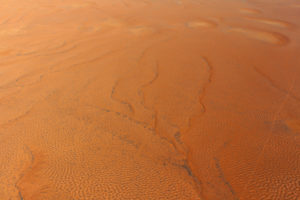
The vastness of the desert
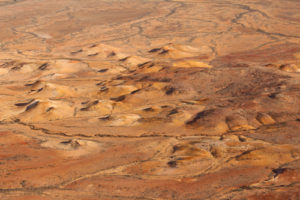
The desertscape is far from flat
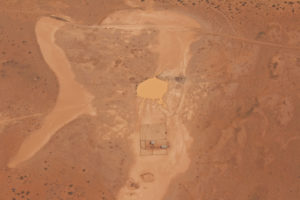
A mustering station and dam in the middle of the outback
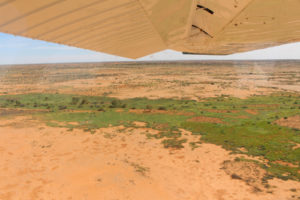
Parts of the desert are as green as a bowling lawn from the recent rains
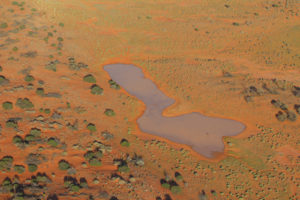
Just for scale – the green blobs are full-sized trees
Far from being deserted – the Australian outback is full of life and stories. You could say it is both an ancient and modern, priceless gem.

